Day One – An idle mind turns to philosophy
Paddling alone in the clear waters of Georgian Bay and area for a few days was the objective. Introspection and answering life’s big questions wasn’t on the agenda, at least until I left our driveway in Fonthill.
The anticipation of leaving Niagara to kayak surrounded by the Canadian Shield’s pink granite, feeling winds blown across 50 kilometres of open water was exhilarating, yet it can be lonely out there. This little paddle holds no comparison to true explorers, those with the courage to go where no one has gone before, but that little tinge of trepidation remains.
These two emotions, anticipation and trepidation, make a powerful pair. Are they related? Do you need to experience one to feel the other? Does more trepidation heighten anticipation, potentially increasing the enjoyment of the activity? How does one strike the balance that most invigorates, and is that balance unique for each of us?
Being on water changes everything for me. On land you think “I’ll figure something out, what’s the worst that can happen?” Water is less forgiving, it simply doesn’t care.
As I reach the southern end of Georgian Bay, the forests change. The spruce trees stand tall and green, yet many of the deciduous trees appear to be just beginning to bud. The thought temporarily disappears, and I arrive at my camp spot for the night.
A nearby trail is a carpet of gypsy moth caterpillars and each squishy steps causes the unavoidable demise of many. Their falling excrement is so loud and the volume so great it sounds like rain. This invasive pest, brought purposely from Europe to North America in 1869, by New England artist L. Trouvelot, in a failed attempt to breed a more hardy silkworm, has stripped the forest bare.
The effect is devastating, and the immediacy of the mess is a slap in the face, the blow that finally makes the destruction we’ve caused to our environment real. It makes me sad as I realize how truly helpless the flora and fauna of this earth are to our callous indifference, and the questions tumble into my mind.
Simple ones, like what will happen to the fall colours this year. More important ones, such as how many years can a tree survive this onslaught before it simply gives up and dies? With all nature provides us, and the knowledge that our generation now has, why do we continue to defile her?
For a brief moment I think of Pelham and our gypsy moth problem, and how that no matter how bad our situation is, someone somewhere else is always worse off. Then I recoil from that thought. How can we possibly measure our success by being relatively better off than someone else? Isn’t the measure of our humanity about lifting everyone up together?
As my first day ends, balance returns, and I wonder that although I may never learn the answers, knowing that I recognized the question is a beginning.
Day Two –Bring out the paddle
The plan is to drive to the launch at Snug Harbour, north of Parry Sound, paddle out to Franklin Island in Georgian Bay, and weather permitting, explore the exposed west-facing coast.
At the launch seven guys around 60 years old are milling about, filling their kayaks and canoes with gear and beer for a few days on Franklin. We introduce ourselves, I tell them to take their time, I’ll squeeze my kayak into the water beside them, and then watch their reactions as a woman pulls up with a kayak on her car’s roof. Immediately the seven grey-haired guys become goofy schoolboys, each wanting more than the next to assist her, tell the best joke or quip, and generally smitten her with their charm. I wanted to ask myself why this routine never changes, but today had been declared question-free, so I just enjoyed the idiocy.
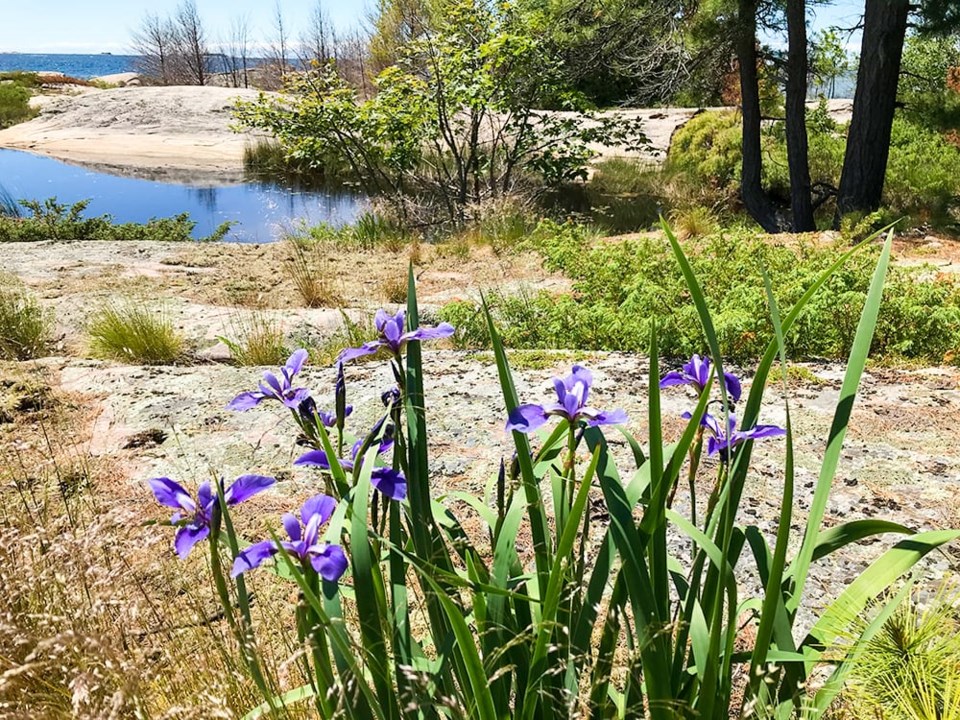
A quick stop on the island to stretch my legs reminded me in dramatic fashion how quickly a sloppy decision can become a serious problem. My kayak was safely perched on rocks a half metre above calm water in a sheltered niche. As I strolled the granite shore close by, a huge power yacht roared past, its captain waving graciously. It was only as the wake was close to shore that I realized my boat was about to be lifted out to sea or smashed on the rocks. A quick scramble to lift the boat ensued, and all was well as I held it at waist height as the yacht’s wake crashed around my knees.
Better still, I had been recording some thoughts just prior, and unwittingly left the recorder on. I now have two minutes of waves crashing about followed by 34 more minutes of rhythmic paddle stroke sounds with gulls crying in the background recorded to play any time I need nature’s calming in the future.
It’s clear that on Georgian Bay’s outer islands the birds and animals haven’t ceded control yet. A bold, beautiful black raven scolds my entrance into her private fishing bay, unwilling to taking any guff. Red-winged blackbirds, walking on lily pads searching for bugs, pay no attention to either of us.
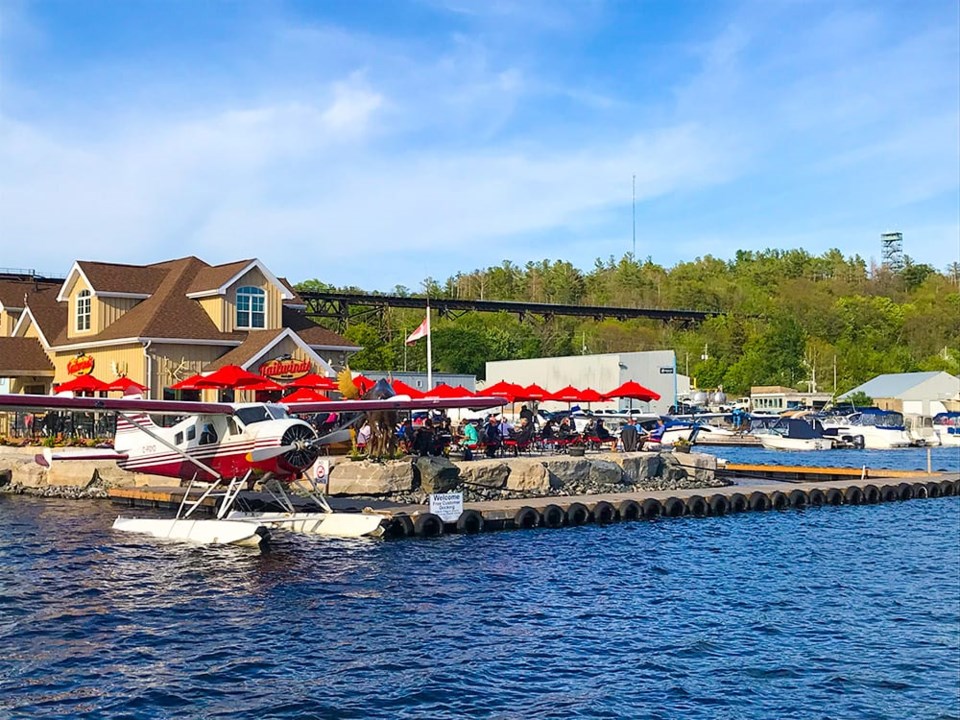
A solitary snapping turtle guards the next rock cut along the coast. It defiantly stares me down, unprepared to seek shelter in the water like its timid Niagara painted turtle cousins. A deer cautiously looks my way, assesses I’m no risk, and continues grazing. This is what I came here for.
While talking back at the launch, two guys preparing to paddle out ask me how rough the water and wind was. I start to reply when I realize that I’d recorded my route on my Ride with GPS bicycling app, which also calculates elevation gain. I checked my phone and replied that it was fairly rough, but not bad, as my kayak had only climbed 187 metres during the 14K paddle. They were still processing that piece of useless analytical information as I drove away.
A hike on Lookout Point Trail in Killbear Provincial Park became a run when I couldn’t resist the soft black earth carpeted with pine and spruce needles. Hard granite outcrops provided an excuse to walk and catch my breath — it was sublime.
Day Three – History lesson
Forecast average wind speed of 30 kph with gusts to 60 kph ruled out wide-open Georgian Bay today, so Nine Mile Lake, a sinuous channel-like lake with only a half-dozen modest water access cabins was today’s target of exploration.
An extremely peaceful and quiet paddle led me to a 1927 hydro power generation dam which still stands, unused. I marveled respectfully about the men and engineers that built this remote project nearly 100 years ago.
The kayaking this day was incredibly calm and natural, with no other humans around. When I realized what appeared to be an abandoned, decaying dock was actually a duck hunters’ blind, I startled myself with a spontaneous scream: “I hope the f***ing bears get you.”
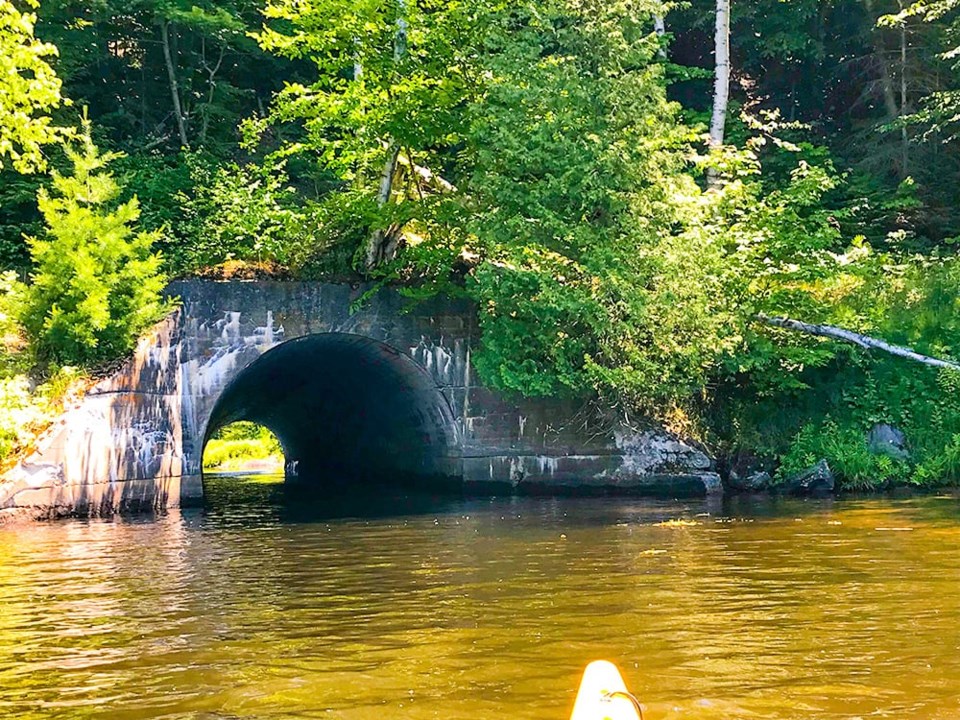
A second paddle to discover a derelict, century old stone culvert under an abandoned rail line finished the day. Upon reaching the culvert, philosophy reared its ugly head again. The only reason to attempt paddling through this dark, debris-strewn passage was simply because it was there. All went well during this pointless risk, and the answer to why we do such things simply because the opportunity exists remains a mystery.
Day Four - Cottage country, just as imagined
I expected the price of paddling beneath the historic wooden trestle swing bridge that connects the Wasauksing First Nation of Parry Island to the mainland would be merely tolerating the ridiculous volume of boat traffic in Parry Harbour. The unmuffled roar of a seaplane approaching from behind corrected my assumption in a flash. After two more seaplanes whizzed overhead before splashing down, I figured I’d ventured onto their water landing strip, and my yellow kayak was functioning as a marker buoy.
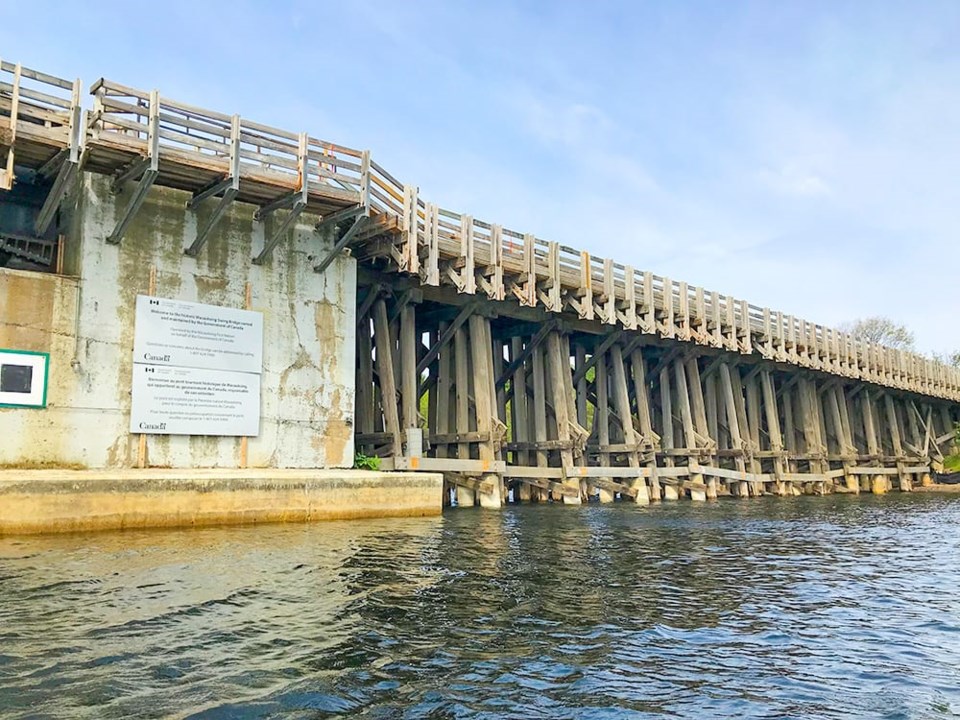
No ravens or snappers greeted me this day. It was an enormously gross yellow inflatable duck with a pirates patch over one eye that welcomed me into a cottage-strewn channel.
These narrows were power boat territory, and if I wanted to be there in my kayak, that was my problem not theirs. I’d seen this movie before while riding my bicycle on the wrong road, and realized it was time to leave.
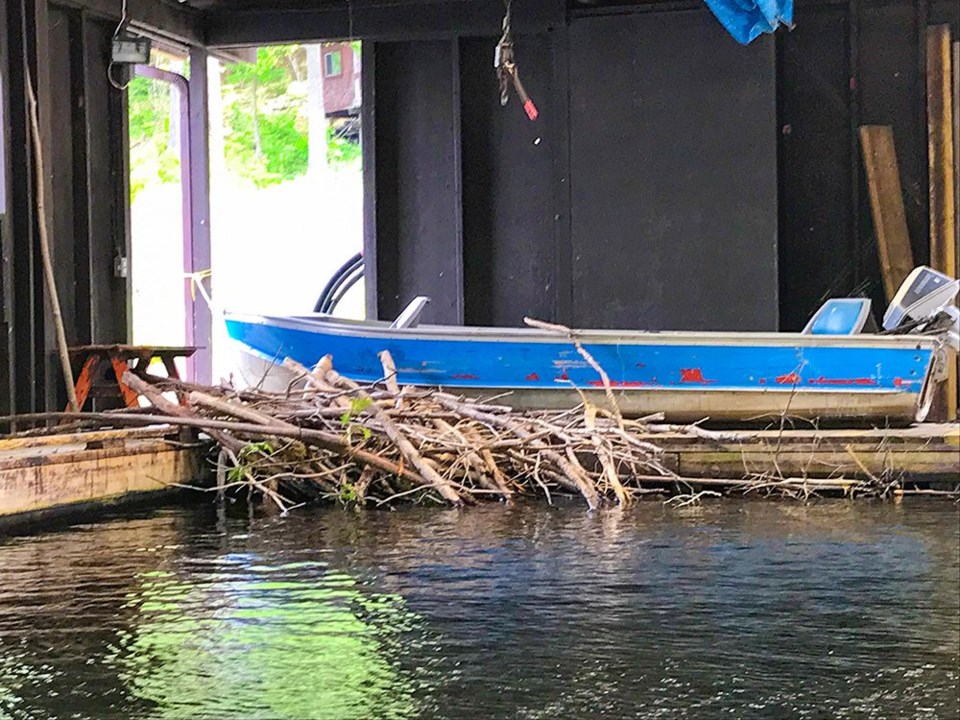
As I paddled past an unkempt, neglected boathouse with its doors askew, nature provided a subtle sign of encouragement, an indication that perhaps she was more resilient than I’d guessed. In the slip where a yacht should have been tethered, a large, messy beavers’ home was under construction. ◆


